Step into Singapore’s street food scene, where the air hums with the steam of chicken rice and the clack of chilli crab claws echoes under neon lights. It’s a foodie paradise—cheap, fast, and bursting with flavour—but time it wrong, and you’re dodging rain or sweating through the magic. Nailing the best time to visit Singapore for street food in 2025 unlocks a first-timer’s taste of the Lion City’s soul.
For anyone plotting a 2025 Southeast Asia trip, Singapore’s street food—served in open-air hawker centres with a dizzying mix of dishes—is a must-experience, blending urban polish with gritty charm. This guide is your ticket to the top months for that perfect plate, spotlighting the centres and dishes that make Singapore a culinary star. Whether you’re chasing mild days or dodging monsoons, let’s find your street food season!
Singapore’s Seasons: When Street Food Shines
How Singapore’s Weather Powers Street Food
Singapore’s tropical pulse drives its street food scene, and for first-timers in 2025, syncing your food cravings with the seasons is key. Unlike HCMC’s chaotic banh mi carts or Manila’s sizzling sisig, Singapore’s weather—dry, hot, and wet—shapes a polished yet gritty food experience. Here’s the breakdown.
The dry season (February to April) is the best time to visit Singapore for street food in 2025. Temps range from a mild 27°C to a warm 31°C, with rain lighter at 100–150mm a month. It’s perfect for open-air centres—think Maxwell’s breeze or Newton’s night buzz—and seafood like crab stays fresh. Humidity is bearable (70–80%), so you’re not drenched while slurping laksa. For newbies, it’s the easiest window—milder, drier, and full of flavour.
The hot season (May to August) keeps things warm, 29–32°C, and humid (80 %+), with moderate rain at 150–200mm. Outdoor stalls get sticky, but covered centres like Lau Pa Sat thrive. Dishes hold strong—satay grills smoke, chicken rice steams—but heat can test first-timers craving that open-air vibe.
Then there’s the wet season (September to January)—monsoon mode. December’s 300mm rain floods streets, and humidity clings like a damp shirt. Covered centres stay busy, but outdoor buzz fades—soggy tables dampen the charm. 2025 note: Late 2024’s wet stretch lingered into December—plan for a rainy finish next year. Check Singapore’s historical weather
First-timer tip: Dry season’s your street food sweet spot—milder days, full flavour. Want the regional scoop? Check our 2025 Southeast Asia guide.

Best Time to Visit Singapore for Street Food in 2025
Top Months to Feast on Singapore Street Food
When’s the prime time for Singapore’s street food in 2025? It’s all about mild, dry days that make every bite sing. Here’s the rundown on the best months—and one to skip—for your first foodie dive.
February to March kicks off the dry season strong. Temps hover at 27–30°C, rainfall is at its lightest (100mm in March), and Singapore’s streets buzz pre-summer. Centres like Maxwell hum with morning crowds, and Newton’s outdoor tables shine at night. It’s mild, dry, and perfect for newbies—sea breezes cut the heat, and dishes like chicken rice hit peak freshness. March is the standout—calm, clear, and street food at its best.
April sneaks in as a warm contender—30–31°C, still dry-ish (150mm rain). It’s the last gasp before humidity spikes, great for open-air spots or a late-night satay run at Lau Pa Sat. Crowds ease post-March, making it easier to snag a table. Heat’s up, but the food holds strong—perfect if you’re pairing it with a Marina Bay stroll.
May to June bridges into the hot season—31–32°C, with moderate rain (150–170mm). Indoor centres like Chinatown Complex shine, and outdoor stalls adapt with fans. It’s busier with summer travellers, but lighter than peak wet months—still a solid pick for first-timers craving variety.
Avoid December: Wet season’s peak—300mm rain (plus flood risks) dampens Singapore, dims outdoor buzz, and sogs the vibe. Compare that to March’s 100mm—dry’s the champ hands down. First-timer tip: March is prime—mild, dry, and street food at its best.
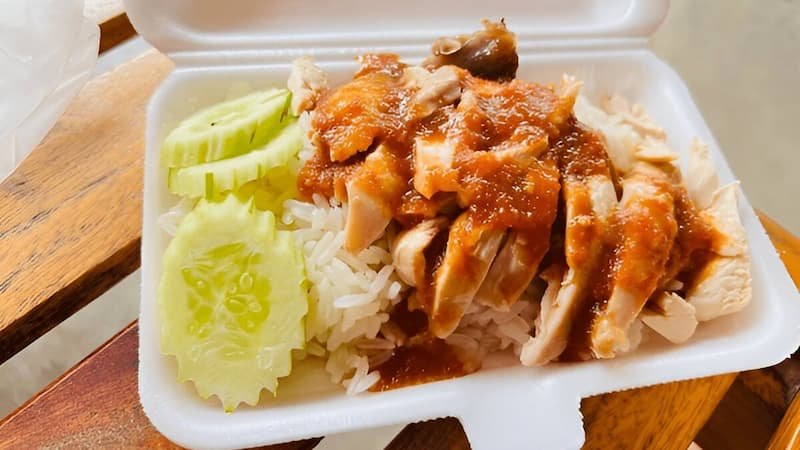
Craving more street eats? See Bangkok’s street food guide.
Must-Visit Hawker Centres for Street Food
Where to Savor Singapore’s Best Street Food
Singapore’s street food peaks in the dry season (February to April), and for first-timers in 2025, these hawker centres and dishes are your must-tries—simple, safe, and packed with Lion City soul.
Maxwell Food Centre (February–April): A Chinatown gem—Hainanese chicken rice, steamed and silky with cucumber and chilli sauce, $3. See reviews for Maxwell Food Centre. The open-air buzz peaks in dry weather—tables fill fast, and the rice’s fragrant steam draws a crowd. It’s newbie-friendly—nothing wild, just pure comfort. Go at 10 AM; it’s quieter then.
Lau Pa Sat (Year-Round, Best February–June): In the CBD, this covered icon rocks satay—grilled skewers with peanut sauce, $5/dozen. The roofed setup shines in May’s heat or wet-season rains, but dry months pack Boon Tat Street with extra street food stalls. It’s a safe, tasty intro—order 10 sticks and dig in.
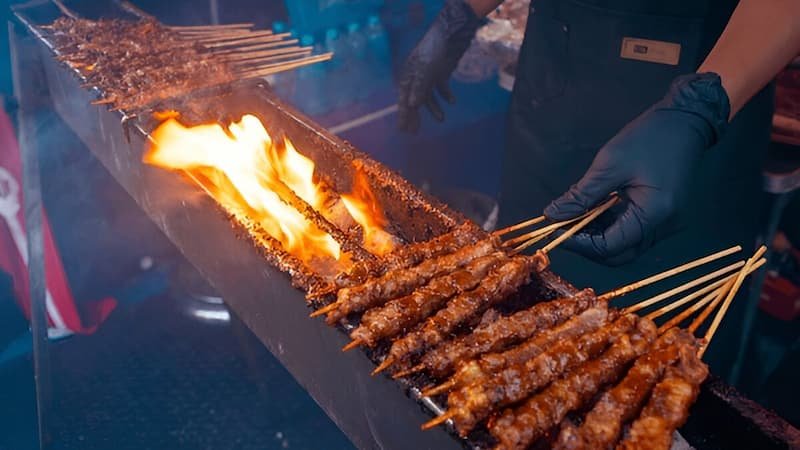
Newton Food Centre (February–March): Near Orchard Road, this open-air spot’s chilli crab—messy, spicy, and $20+—steals the show. Dry nights rock the outdoor tables; seafood’s fresh, and the vibe’s electric. Pair it with buns to sop up the sauce—perfect for adventurous first-timers.
Chinatown Complex (February–April): A sprawling indoor maze—laksa, coconutty noodles with prawns, $4. Dry days pack the lines, but the roof keeps it rain-proof year-round. It’s chaotic and hearty—ideal for newbies easing into Singapore’s street food life.
First-timer tip: Start with chicken rice—simple, safe, Singapore soul. Craving more? Check Hanoi’s pho guide.
Tips for the Best Time to Visit Singapore for Street Food
Newbie Guide to Singapore Street Food in 2025
You’ve got the when and where—now let’s make your 2025 street food run in Singapore smooth and delicious. These tips are for first-timers and tailored to dry-season bliss.
Timing: Evenings (6–9 PM) cool off—Newton’s electric by 7 PM, Lau Pa Sat’s satay grills smoke late. Mornings (8–11 AM) hit Maxwell for breakfast—chicken rice steams. The dry season (February–April) is the best time to visit Singapore for street food—milder, livelier, and no soggy waits.
Budget: Dishes run $3–10—chicken rice leans cheap ($3), chilli crab hits $20+. Cash works everywhere (SGD $5–10 notes), but most centres take cards now—tap for laksa, cash for satay. A street food feast might cost $10–25, an insane value for the spread.
Transport: MRT’s your friend—$1–2 to Chinatown (Maxwell, Complex) or Telok Ayer (Lau Pa Sat). Get more Singapore Travel Tips. Grab’s $5–8 to Newton—dry season skips the hassle. Walking’s easy in Chinatown—centres cluster tightly. Buses (SGD $1–2) hit Orchard for Newton—first-timer simple.

2025 Hack: The Singapore Hawker Festival (likely April/May) adds pop-up street food stalls—think extra options at Maxwell. Book a central stay (e.g., Chinatown or Marina Bay) early; it’s packed. Wet season blues? See our 2025 Southeast Asia guide for regional tips. First-timer tip: Bring wet wipes—March is mild, but crab’s messy.
Best Time to Visit Singapore for Street Food 2025
The best time to visit Singapore for street food 2025 is February to April—dry, mild days and flavours that pop. March shines for its calm, while May–June sneaks in for heat-tolerant foodies. Skip December’s soggy mess unless you’re an indoor champ. Wherever you land, Singapore’s street food scene is ready to dish up a taste you’ll crave again.

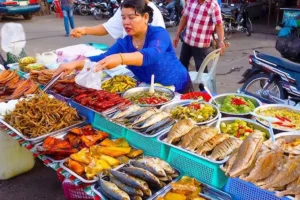
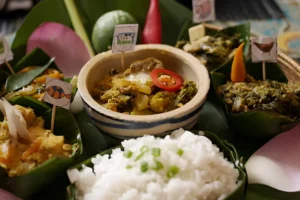





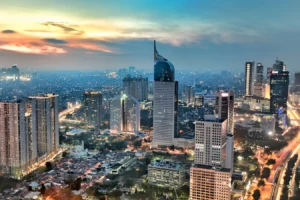







One thought on “Best Time to Visit Singapore for Street Food 2025”